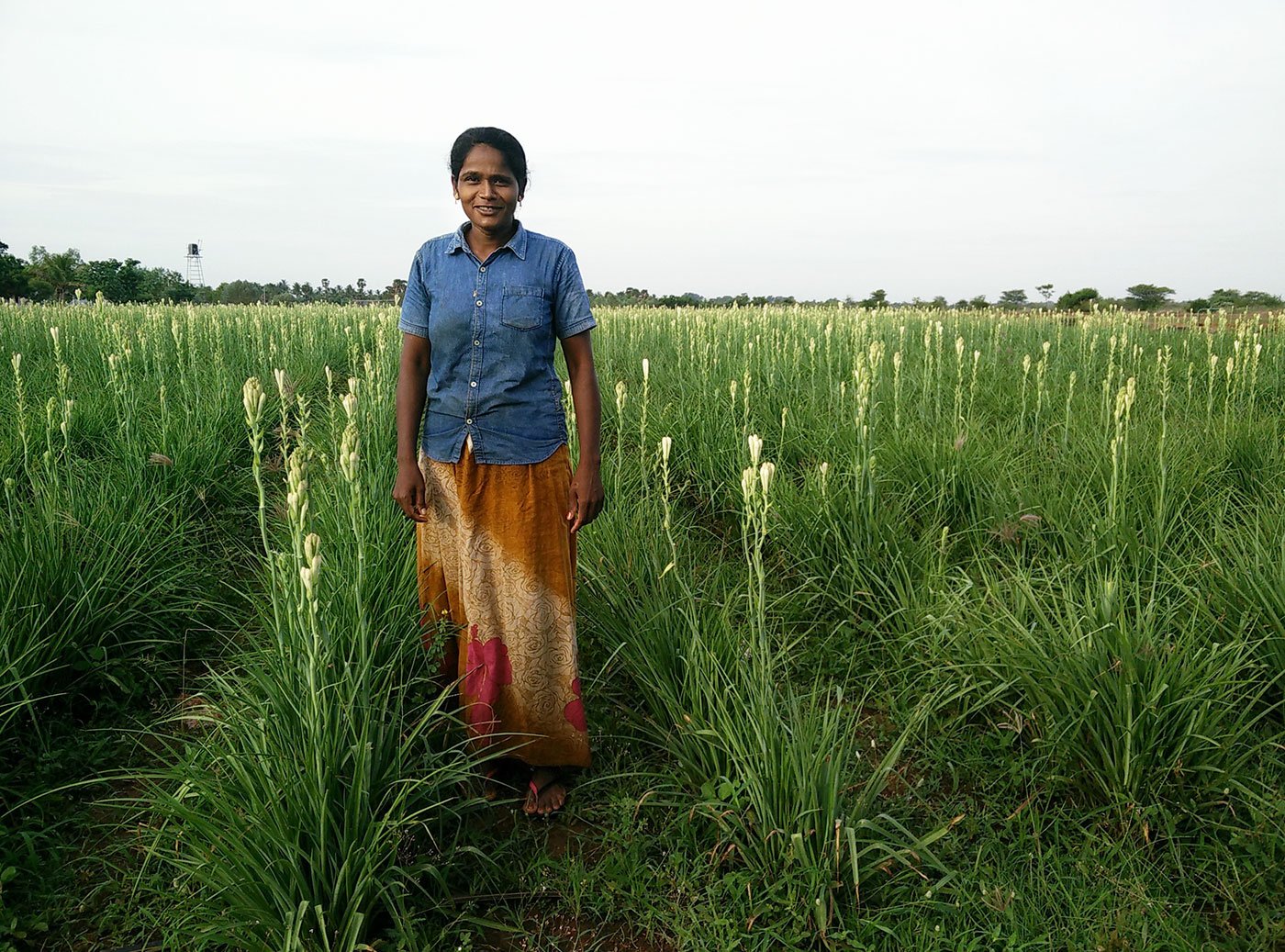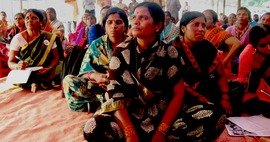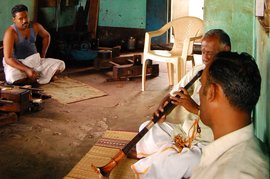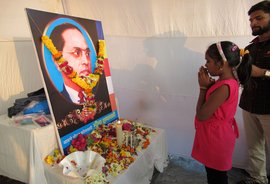In a home that has seen much suffering – there is still laughter.
In water-starved Tamil Nadu – there is a farm where flowers bloom.
In a state beset by rapid soil fertility loss – this small plot uses only organic manure.
Amidst great agrarian distress – this single mother of two battles on gamely. And, so far, thrives as a farmer.
Her story and struggle – first recorded by PARI – were recognised in Chennai where she travelled this week to receive the ‘ homepreneur ’ prize. That’s an award honouring “women pursuing business from home.”
Chandra Subramanian of Melakadu, a hamlet of Muthur village in Sivagangai district, works harder than any male farmer, but wears the clothes of a young boy. “This is my son’s shirt,” she giggles. Her son is 10, she is 29. She’s buttoned the blue garment over her nightie, but despite the layers, appears skinnier than before. Why are you losing weight? I ask. “Work,” she says, pointing to the varappu (boundaries) she’s built between fields herself. “It was narrow here, so I shovelled up sand and strengthened it.” I’ve seen grown men cringe at the thought of that job.
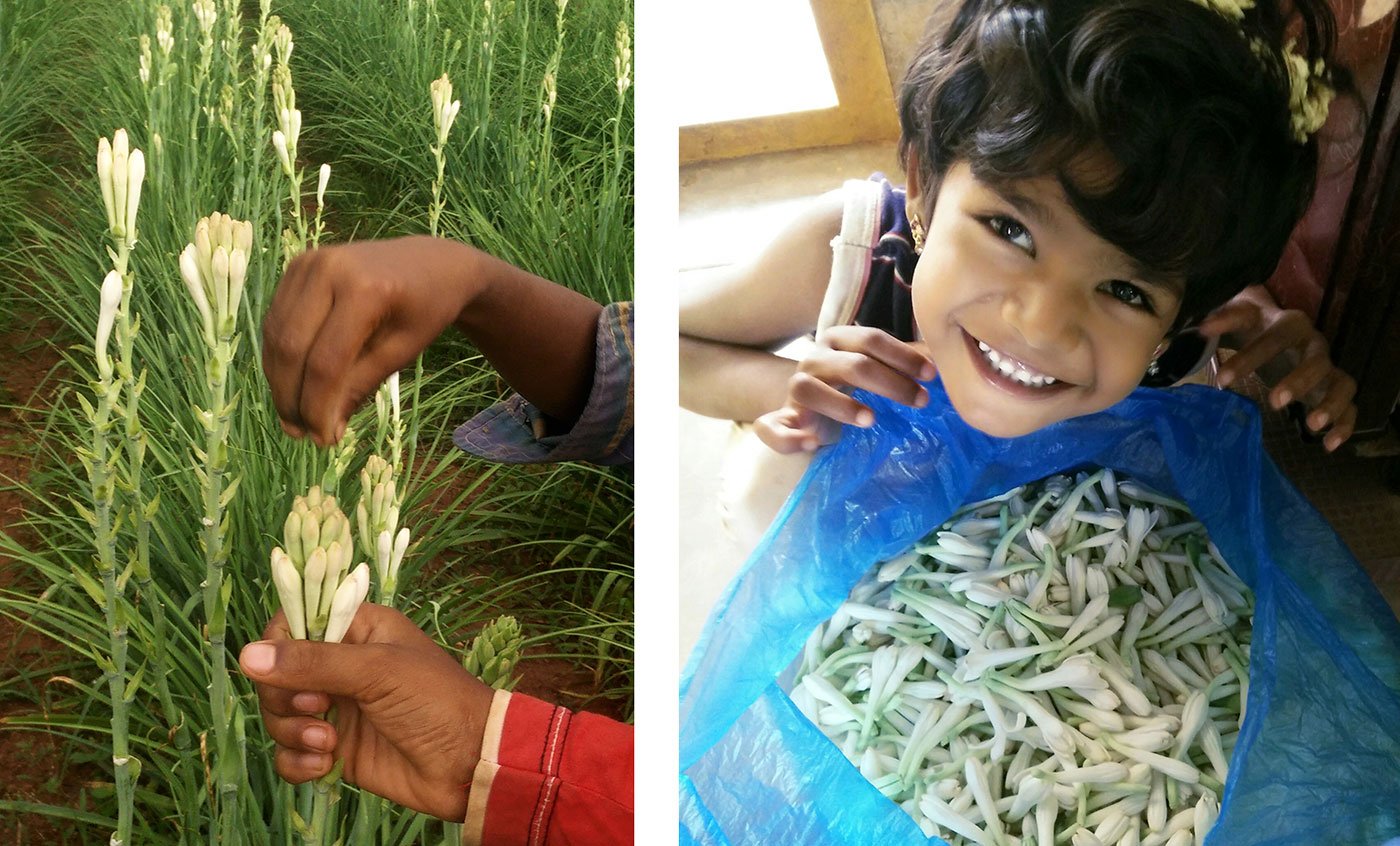
The sampangi or tuberose flowers being plucked in Chandra's field. Right: Inaya, her daughter, shows off a bag full of flowers
Chandra works night and day. Arriving at her doorstep in early July, I found her up long before the resident rooster crowed. At 1 a.m. “because that’s the best time to pluck sampangi – tuberose flowers, grown a lot in Tamil Nadu and widely used in garlands for weddings and worship.
The rate the flowers will fetch depends on when they are picked, she tells me, pouring milk from one tumbler to another, to cool it. “Plucked in the evening, they fetch a lower rate. Wait till next morning, and they’ve bloomed fully, so it’s a waste of time. The ones picked at night are the best. Here, drink this!” She gives me fresh milk, frothy and spiked generously with sugar. Chandra has tea. She dips milk biscuits into it, and her breakfast’s done. “Let’s go,” she says, and I follow her.
I first met Chandra at her Melakadu farm in 2014 – a year after her husband had taken his life. Only two weeks before that tragedy, Chandra’s father had died in a road accident. Just 24 when all this happened – and with two young children – she had come back to live with her widowed mother. Both women farm for a living.
Chandra owns four acres of land. In years of good rains, she raised paddy and sugarcane. But two abysmal monsoons saw her switch to vegetables, retailing them herself at the local shanty. This year, she’s betting on flowers, keeping two acres for them and half an acre for vegetables. The rest lies fallow. Working daily on the flowers is exhausting – but she does it herself. Flower pluckers charge Rs. 150 a day. “They come in pairs. If I fork out 300 rupees a night, will I make money?” she asks.

Chandra with her daughter Inaya and son Dhanush Kumar at their farm. Right: Receiving the 'homepreneur' prize in Chennai
“That’s the
sampangi
field,” she points. I smell it before I see it. Two acres, tidy and green. The tall stalks come up to Chandra’s shoulders. The flowers, growing in tight clusters, crown the plant. There is a slim gap between the rows. And every night, wearing her nightie and a miner’s lamp – “800 rupees, very powerful, I can see even scurrying ants” – Chandra spends four hours plucking flowers while the world is asleep.
Sometimes, snakes and scorpions are not asleep. She was stung by a scorpion recently. What did you do? I asked, alarmed. She slept it out, she says, grinning cheekily when I bug her to wear gum boots.
At 5.30 a.m. every day, she bundles the plucked flowers into a sack and delivers it at the railway crossing, from where a truck takes it to Madurai.
Returning home, she tends to the kids – Dhanush Kumar in Class 5, Iniya in Class 2 – and packs them lunch. “This new school is twice as expensive as the old one. But I want the best for them. Who else am I slaving away for?” Then, she takes her vegetables to the market. That money, she calls a ‘bonus’. It fetches more snacks and food. “If there was water, we’d grow paddy for ourselves. But now?”
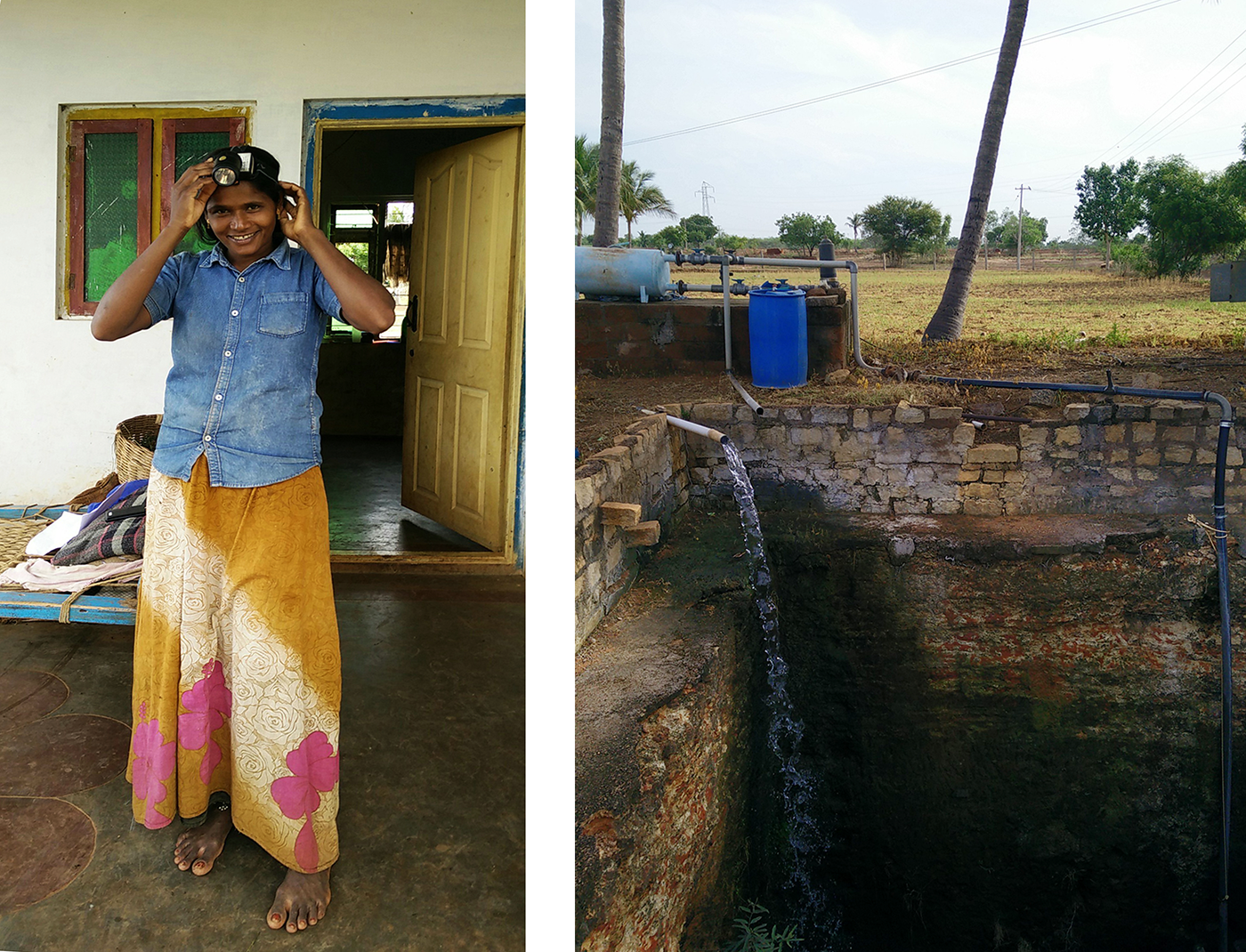
Chandra wears her miner's lamp, which lets her see even 'scurrying ants' in the night. Right: the open dug wall where she and her brother store the water from their borewells
Her mother butts in. “You could sell these,” she says pointing to her cage full of guinea pigs. “If it was a chicken or a goat, you can eat it, what’s the use of this?” That argument has been on for two years. Chandra’s reply is the rodents are pets and mustn’t be eaten.
On days that she’s lucky, she snatches a couple of hours of sleep in the afternoon – for she’ll lose many at night. Now she’s off to tend to the motor. “See the water?” she asks. It’s there, cool and black, very deep below in an open dug well that’s almost 20 feet in diameter. Chandra and her brother store the water from their borewells in this 75-foot well, and from here, irrigate their fields. “My borewell goes down 450 feet, but my brother’s new well – they had to drill 1,000 feet to find water.”
“When there is good rain, the well fills up, even overflows. Once, we threw the kids in with plastic cans tied to their waist,” she laughs, and then some more at my stunned look. “They won’t sink; the cans make them float. How else will they learn swimming?”
Chandra scolds the kids who have now joined us. “Look at your hair, so dry! Go, oil it, comb it!” We walk to pluck guavas. She insists – as does her mother – that I take some back home.
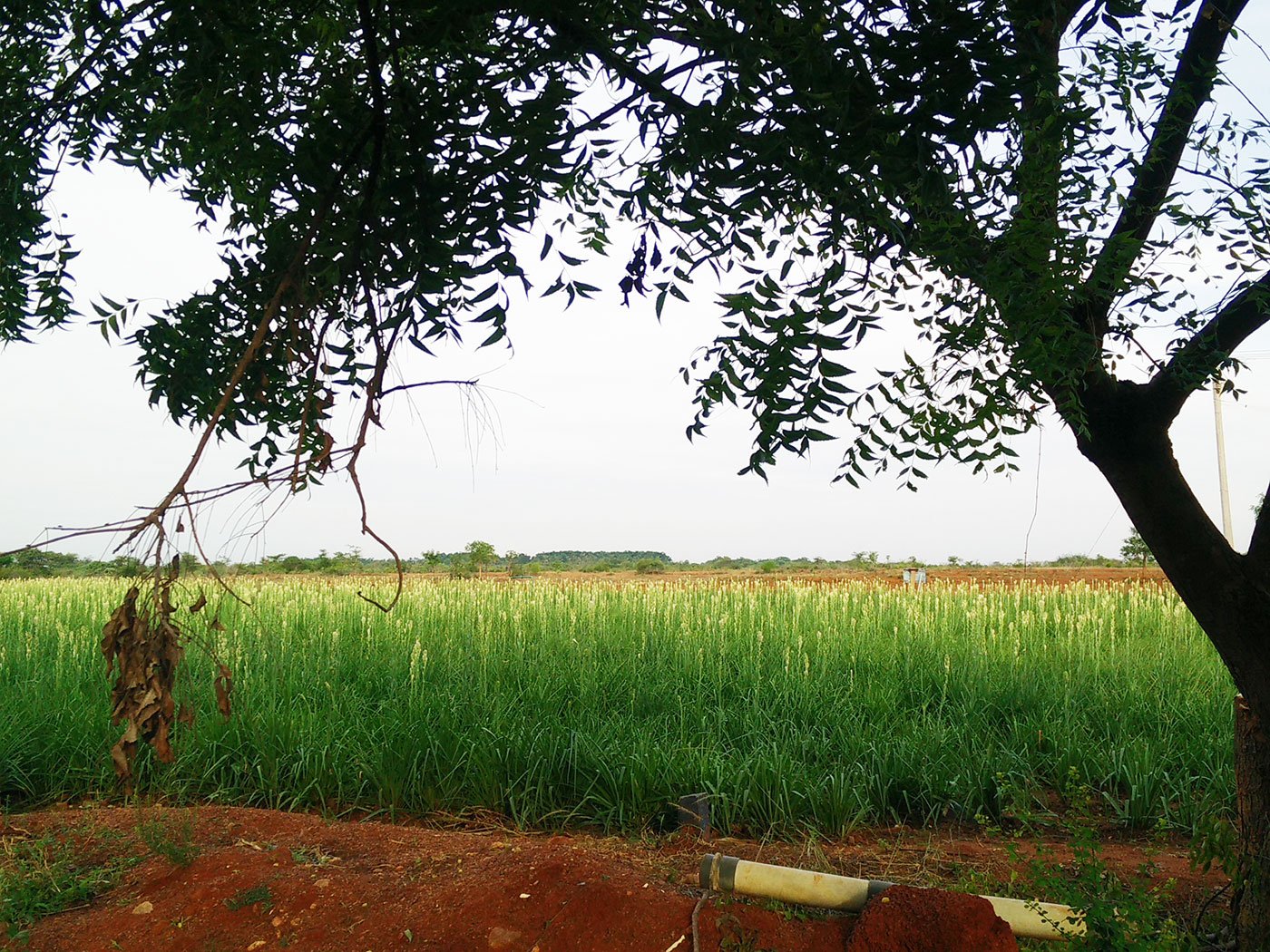
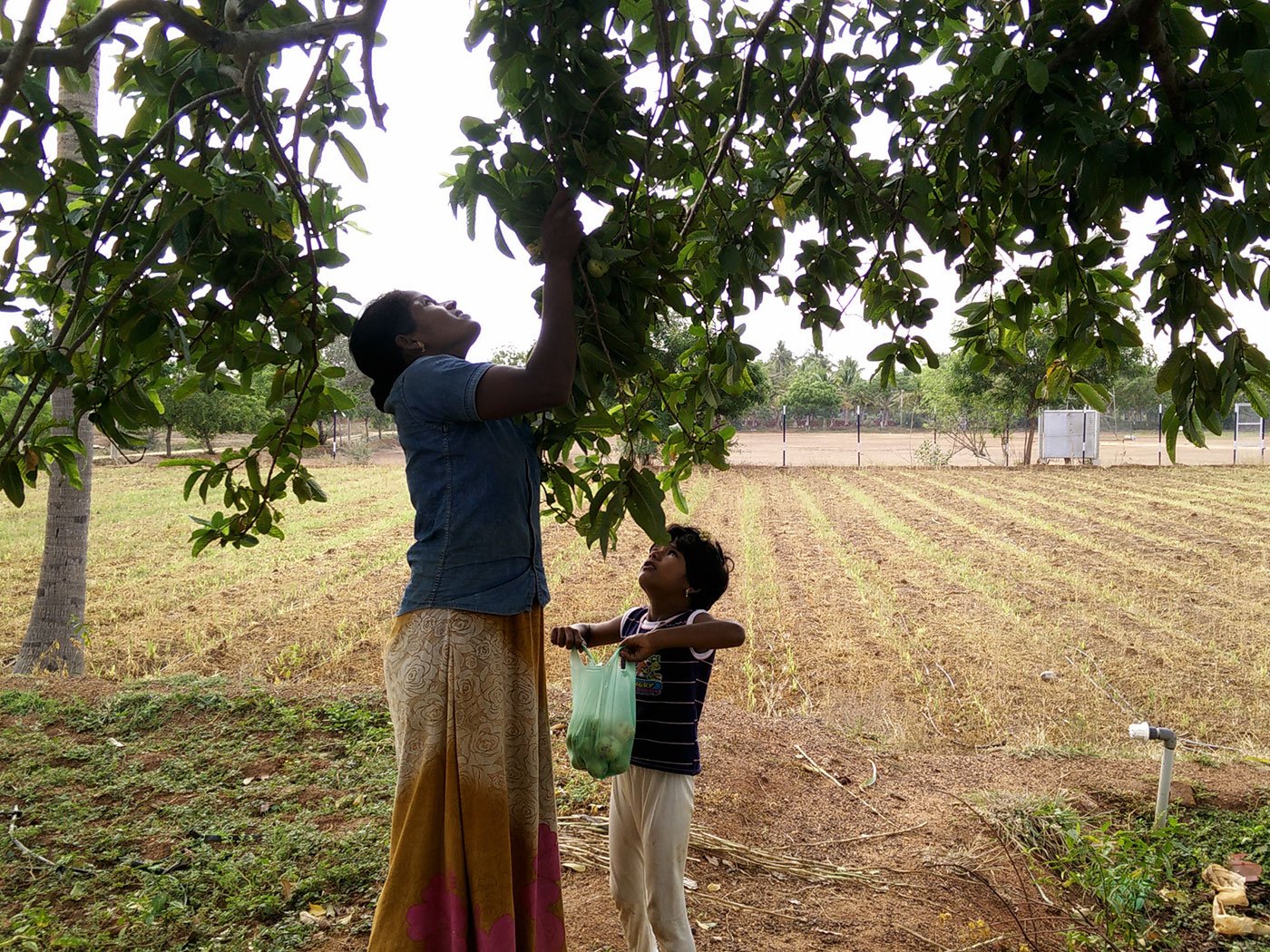
Left: Two acres of Chandra's land are under tuberose cultivation. She uses only organic manure on her farm. Right: Inaya holds out a bag to take the guavas that Chandra plucks from trees on their farm
Chandra wants to switch fully to flowers, she tells me, while plucking jasmine from her brother’s fields. “The rate for sampangi is volatile, yes. But I see profit in this,” she points out. She invested a lakh in each acre of tuberose. That’s Rs. 40,000 for the bulbs, around Rs. 30,000 for the drip irrigation, and the rest to prepare the field and plant. “I only use organic manure, cow dung,” she explains. It takes seven months for the plant to flower, and a couple more for the yield to stabilise.
Now, she plucks 40 kilograms a day, 50 on good ones. But the price varies drastically. “From 5 rupees a kilo, to over 300 rupees,” she says. It shoots up in wedding and festival seasons and plummets soon after. “If I get Rs. 50 to Rs.100 a kilo daily, I can make a profit.” On average, Chandra reckons, she is left with a net of Rs. 10,000 a month, sometimes more, from these two acres. That’s after deducting all input costs, maintenance, and paying off loan and interest instalments. This is what her family lives on. She might make another Rs 2,000, monthly, from the vegetables.
She’s even managed to invest a little in an LIC insurance policy. She will limit her planting of vegetables (gherkins for pickles will be next). “See those fallow fields? I’ve never left them like this before… But there’s no use cultivating without rainfall. The watermelons, even the coconuts, have shrivelled up.”
Back at her house, she threads the flowers and makes me pin them to my hair. “Take some back for your daughter,” she says. It won’t last till I reach Mumbai, I tell her, while showing her a photo of my daughter. “See her hair? She can’t keep flowers with that cut,” Chandra observes with a quiet smile. Then she asks me: “Can’t you afford to buy her a bottle of oil and a comb?” The laughter that follows is like summer rain.
